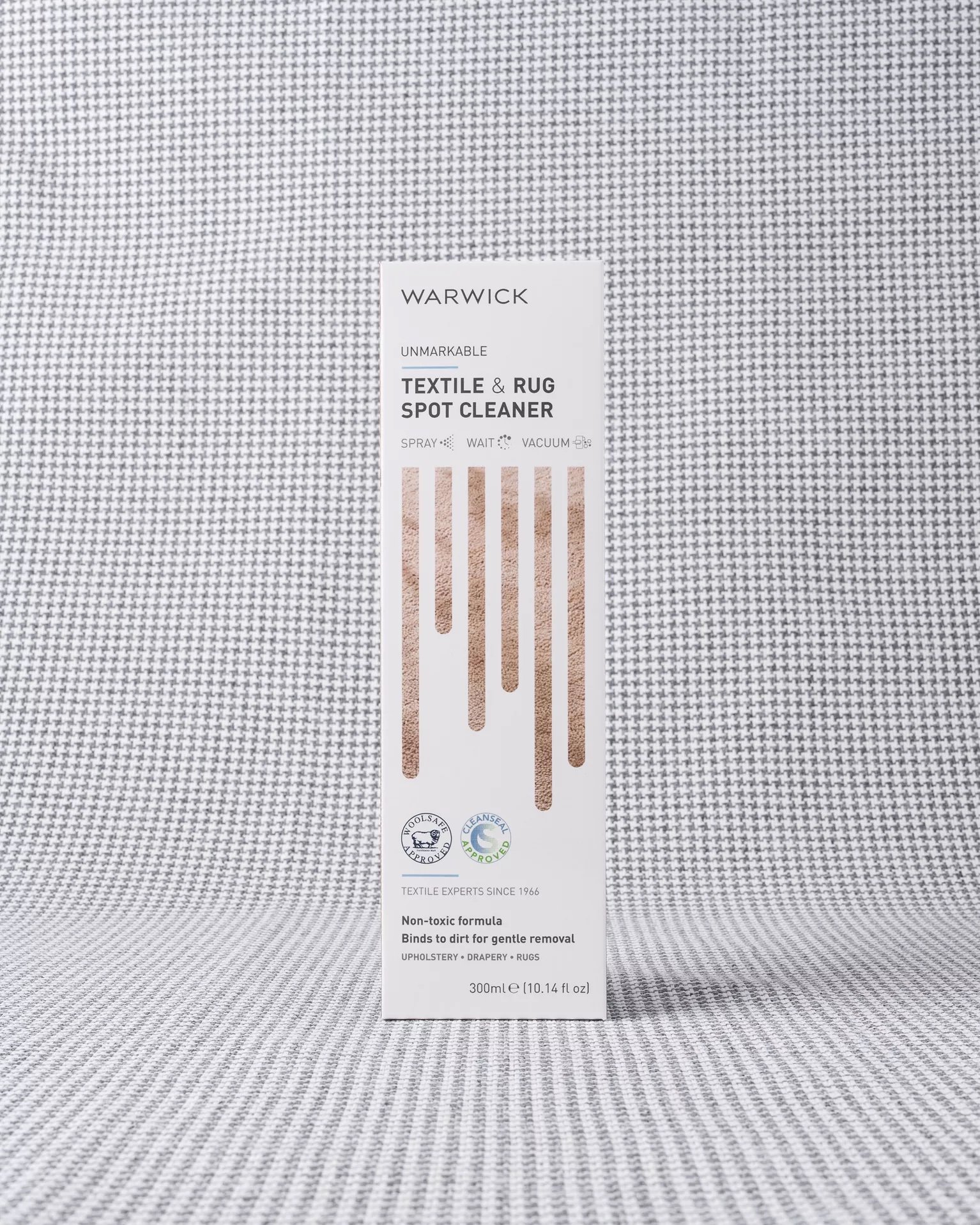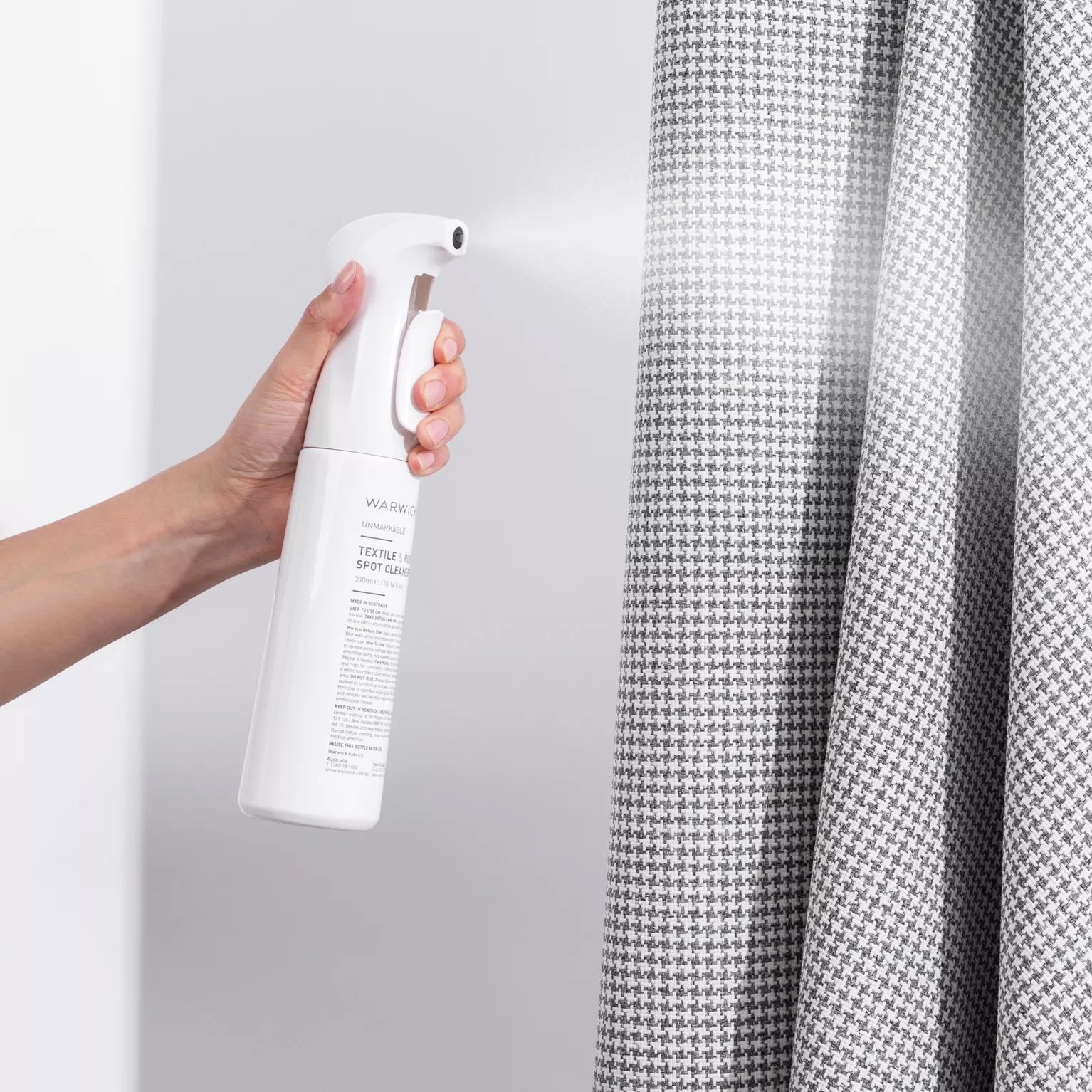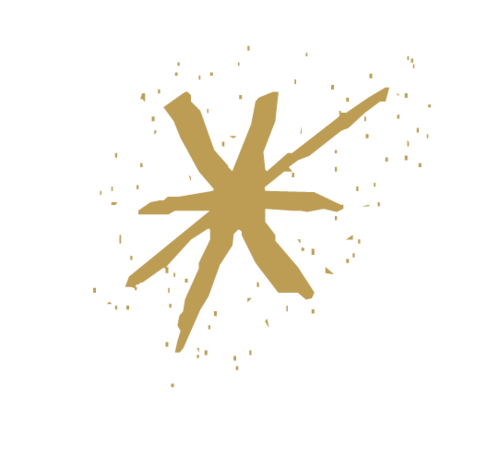Unmarkable Textile & Rug Spot Cleaner ( replacement for Halo spot cleaner)


Unmarkable Textile & Rug Spot Cleaner ( replacement for Halo spot cleaner)
UNMARKABLE- Textile & Rug spot cleaner
Since 1966, Warwick Fabrics have sourced, designed, and supplied premium quality textiles worldwide. Their Unmarkable Textile & Rug spot cleaner is the ideal fabric companion for all households to keep furniture, rugs and decor in their best condition.
This product has replaced the Halo spot cleaner.
Safe to use on: wool, jute, cotton, bamboo, polyester & viscose.Simple to use
The cleaner is easy to use, with a simple spray function. Apply the cleaner onto a cloth and press onto the stained area to remove. Once the stain has gone, dampen a cloth and use water to blot gently. Do not rub as this will only worsen the stain, and repeat if necessary.
We recommend testing on a small area first, and seeking professional cleaning advice for more serious stains.
For more information visit
https://www.warwick.com.au/news/articles/unmarkable-fabric-rug-spot-cleaner/
Halo Spot Cleaner
Cleaning Guide
Spot cleaning
Treat spills and stains as soon as possible. Test on hidden area to ensure fabric and colour are not removed. Gently scrape any soil or mop any liquid from the surface of the fabric. Use of soap or detergent with water should be approached with caution since overzealous rinsing to remove soap residue may result in over-wetting, water marking and possible wetting of substructure (this may create other stains or damage products).
1. For non-oil-based stains Use warm water and non-toilet soaps which do not contain optical brighteners (consider Velvet soap, Lux Flakes, Softly). Mix a small amount of soap and warm water solution and apply to the stain, rubbing gently. Blot dry with a clean towel. Apply cool water (preferably filtered or distilled water) and blot dry again. Then with a hair dryer, working out from the centre of the stain, dry quickly to prevent rings forming. It is generally preferable to clean whole panels of fabric in this way rather than trying to spot clean specific areas.
2. For oil-based stains following the same basic guidelines as above, apply a proprietary brand solvent based cleaner and try to clean generally in panels rather than spot cleaning specific areas. A helpful industry ‘secret’ for spot removal of oil based biro marks is by the application of conventional hair spray. To further enhance spot cleaning results, Warwick have introduced the Halo Fabric Care Kit which includes Halo spot cleaner for most household stains, Halo fabric deodoriser to help neutralise pet and general odours and Halo fabric protector to restore liquid repellency on fabric sections that have been spot cleaned.
*For treatment of specific stains, see the stain removal guide.
Professional fabric servicing
Warwick Fabrics recommend that water-based ‘Fluro chemical’ type fabric protectors (such as DuPont Teflon® and 3M Scotchgard®) be applied by licensed applicators only. Check your care label first to see if a mill-applied protection was incorporated during fabric manufacture. Fabric protectors do not eliminate the need for vacuuming, routine cleaning or proper care. They will, however, make spot cleaning and vacuuming quicker, easier and more efficient between professional cleans and keep your fabric looking cleaner longer, as well as extending its life. Professionals applying fabric protectors must always pre-test to qualify fabric suitability.
Warning
Extreme caution should be taken if considering treatment of velvets and pocket weaves with stain repellent products. Some high pile velvet and pocket weave jacquards may change in surface character if stain repellent treatments are incorrectly applied. Extra care should be taken to pre-test for these fabrics.
Professional cleaning frequency
Is determined by the furniture use, your own maintenance, upkeep and environmental conditions. As a good ‘rule of thumb’ overall cleaning is recommended every 12 months for most family room lounges.
Velvet curtain care
Curtaining velvet needs care in handling and use. Window fittings coming in contact with the curtain should be avoided.
Stiff brushing or strong vacuum cleaning on the reverse side of velvet can also pull at the pile. Draw cords or other methods of drawing without handling the curtain itself are recommended, as grasping, particularly with fingernails, can cause crushing and other damage. Velvet curtains should be dry cleaned.
Stain Removal
ALCOHOLIC BEVERAGES After the moisture has been blotted up, dab at the stain with a clean cloth dampened in rubbing alcohol. Then blot repeatedly with liquid detergent mixed with cool water. Blot dry with a towel. Dab again with clear cool water and blot dry.
BLOOD After the moisture has been blotted up, dab at the stain with a clean cloth dampened in rubbing alcohol. Then blot repeatedly with liquid detergent mixed with cool water. Blot dry with a towel. Dab again with clear cool water and blot dry.
CHEWING GUM Rub an ice cube over the gum to harden it, then scrape off the excess with a dull knife. To remove what’s left, use dry cleaning fl uid. Chocolate (and other soft candy) This is a combination greasy/non-greasy stain. Scrape excess away, then go over the spot with cool water mixed with a liquid detergent. Blot thoroughly and then clean with dry cleaning fluid.
COFFEE AND TEA Sponge with warm water. Apply warm glycerine. Leave for 30 minutes. Flush out with water and dry quickly.
COSMETICS Sponge with warm water. Apply warm glycerine. Leave for 30 minutes. Flush out with water and dry quickly.
FRUIT AND FRUIT JUICE After excess is blotted up or scraped away, blot the spot with cool water. If a stain remains, add liquid detergent and a drop of vinegar to the water. Dab the spot with this mixture and blot until there’s no trace of a stain. Then go over the area lightly with clear water to remove traces of vinegar.
GREASE (INCLUDING HAIR GREASE AND OIL) Scrape away excess if necessary and then dab repeatedly at the stain with dry cleaning fluid. If any stain remains, go over the area with a lukewarm mixture of liquid detergent and water. Always make sure you use a clean portion so you don’t put the stain back in the fabric. Last, go over the area with a clean cloth moistened with cool clear water.
ICE CREAM Scrape away excess and apply cool water mixed with liquid detergent, blotting frequently with a dry cloth so as not to saturate the fabric. Let dry and then go over any remaining stain with dry cleaning fluid. Blot dry.
INK Moisten with warm glycerine. Leave for 10 minutes. Apply liquid detergent and brush lightly. Flush out with water and dry quickly.
IODINE Rub with cut lemon before sponging with warm water. Apply small quantity of detergent with clean cloth. Blot stain then remove soapy residue with cloth wrung out in warm water and white vinegar solution (1/3 vinegar to 2/3 water).
MILK AND VOMIT Blot or scrape away the excess, then take a clean soft cloth and blot. Apply clear cool water to the area, blotting frequently. Then blot with a detergent solution to which you’ve added a small amount of ammonia. Blot dry and wait a few minutes. Go over the area with dry cleaning fluid, blot dry. Finally, blot the area lightly with a cloth moistened with rubbing alcohol.
SOFT DRINKS, SWEETS AND SYRUPS Sponge with water, add warm glycerine and work into stain. Flush out with water and dry.
SHOE POLISH Apply liquid paraffin to loosen the stain, then sponge with dry cleaning fluid.
URINE It is especially important to treat this stain right away, before the urine dries. Otherwise, the urine may react with the fabric dyes and cause permanent discolouration. First, dab at the stain with a solution of white vinegar and water and blot dry. Then apply a mixture of liquid detergent and cool water, blotting frequently and with a dry cloth to avoid saturating the fabric. Finally, dab the spot with clear cool water and blot thoroughly.
WATER SPORTS Blot thoroughly and then dampen the entire spot with clear white vinegar. Wait a few minutes. When the area is dry, moisten it again with clear water, blotting with a dry cloth after every application of the damp cloth. If the fabric has a pile, brush in the direction of the pile when it is dry
